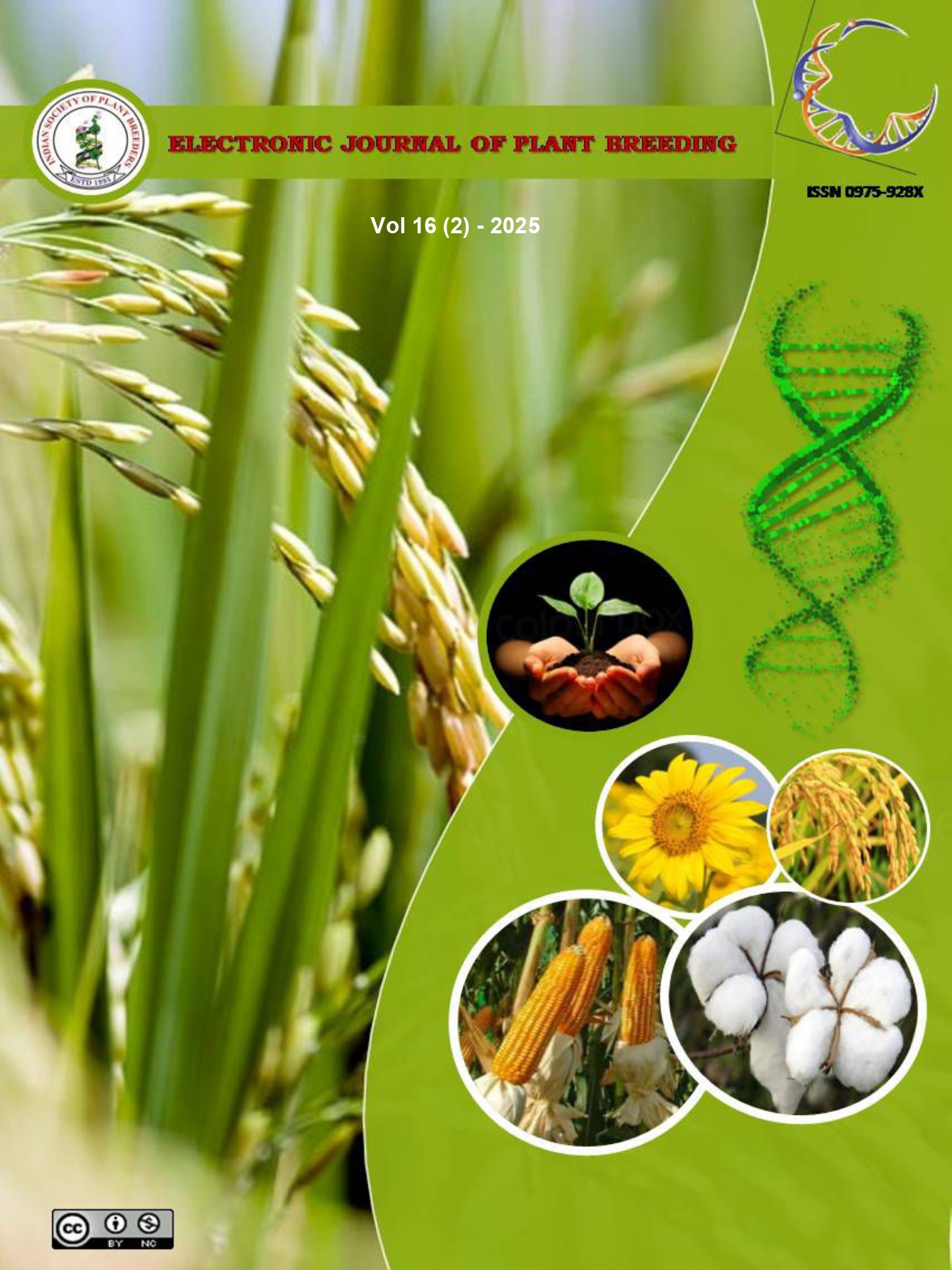Study on gene action and heterotic manifestation of important growth and yield related traits in tomato (Solanum lycopersicum L.) under terai condition of West Bengal
Abstract
A field experiment was conducted in the Department of Vegetable and Spice Crops, Uttar Banga Krishi Viswavidyalaya, Cooch Behar, West Bengal, during the autumn-winter season of 2023-24 to study the nature and magnitude of gene action in the manifestation of important traits and identify promising cross combinations. Seven parental lines and their 10 F1s produced by Line × Tester mating were evaluated for 14 traits. Analysis of variance revealed the existence of significant intra-germplasm diversity among lines, testers, and their combinations, as well as the manifestation of significant desired hybrid vigour among the cross combinations due to heterotic effects. Predictability ratio revealed preponderance of non-additive gene action in inheritance of most of the traits and were governed by over-dominance phenomena. Based on GCA estimate B Mut-3 and BCT 115 dg among the lines and Berika among the testers, were observed to be the best combiners with better yield potential. Based on per se performance, combining ability and heterosis the crosses B Mut-3 x Berika, AC Aft x Berika and BCT-115 dg x Berika were observed to be desirable.

